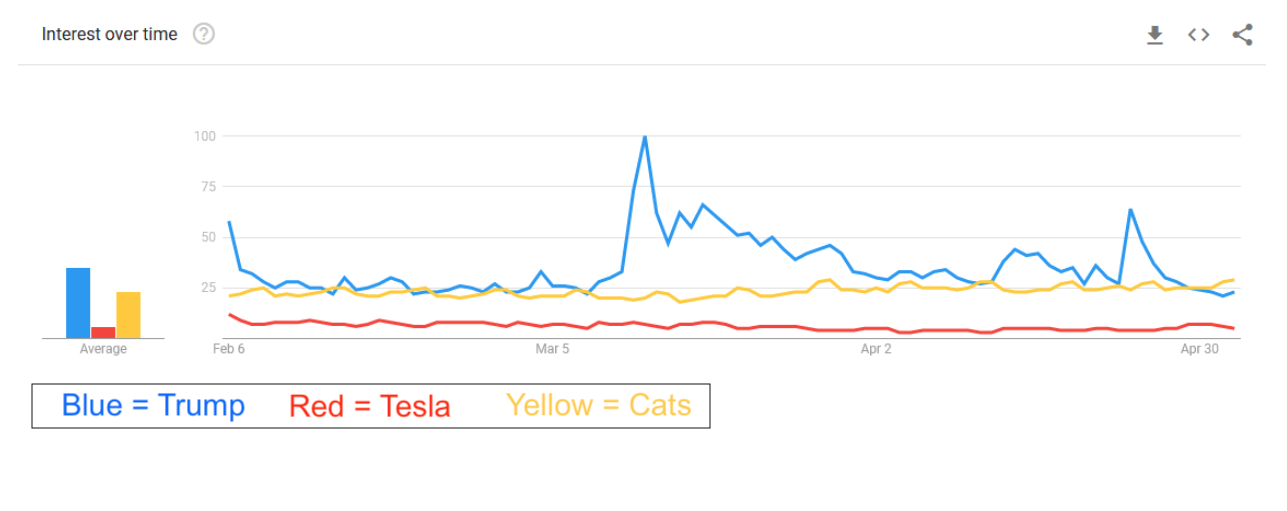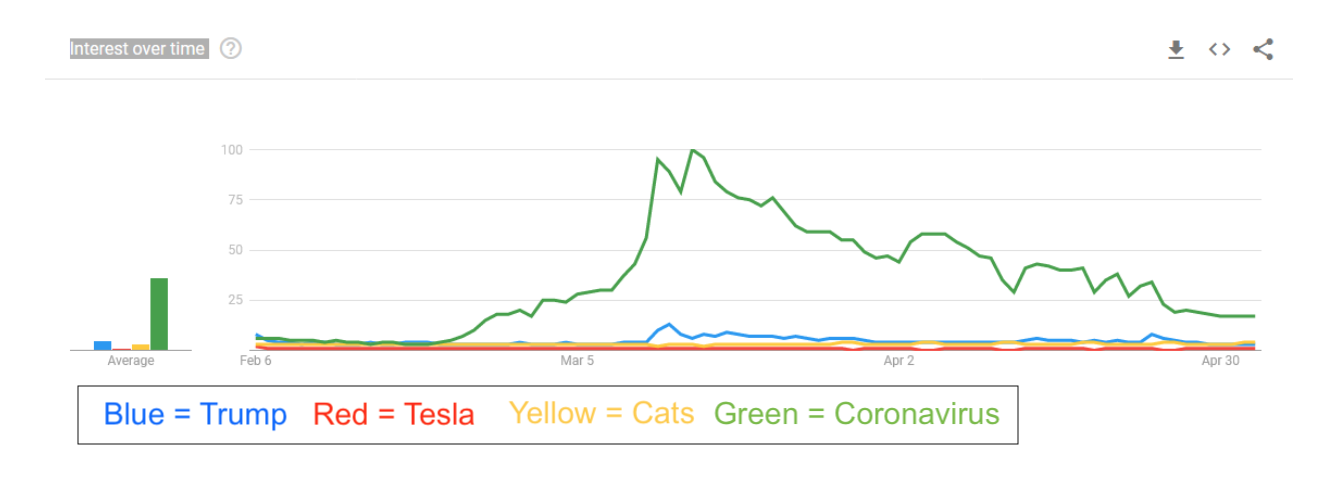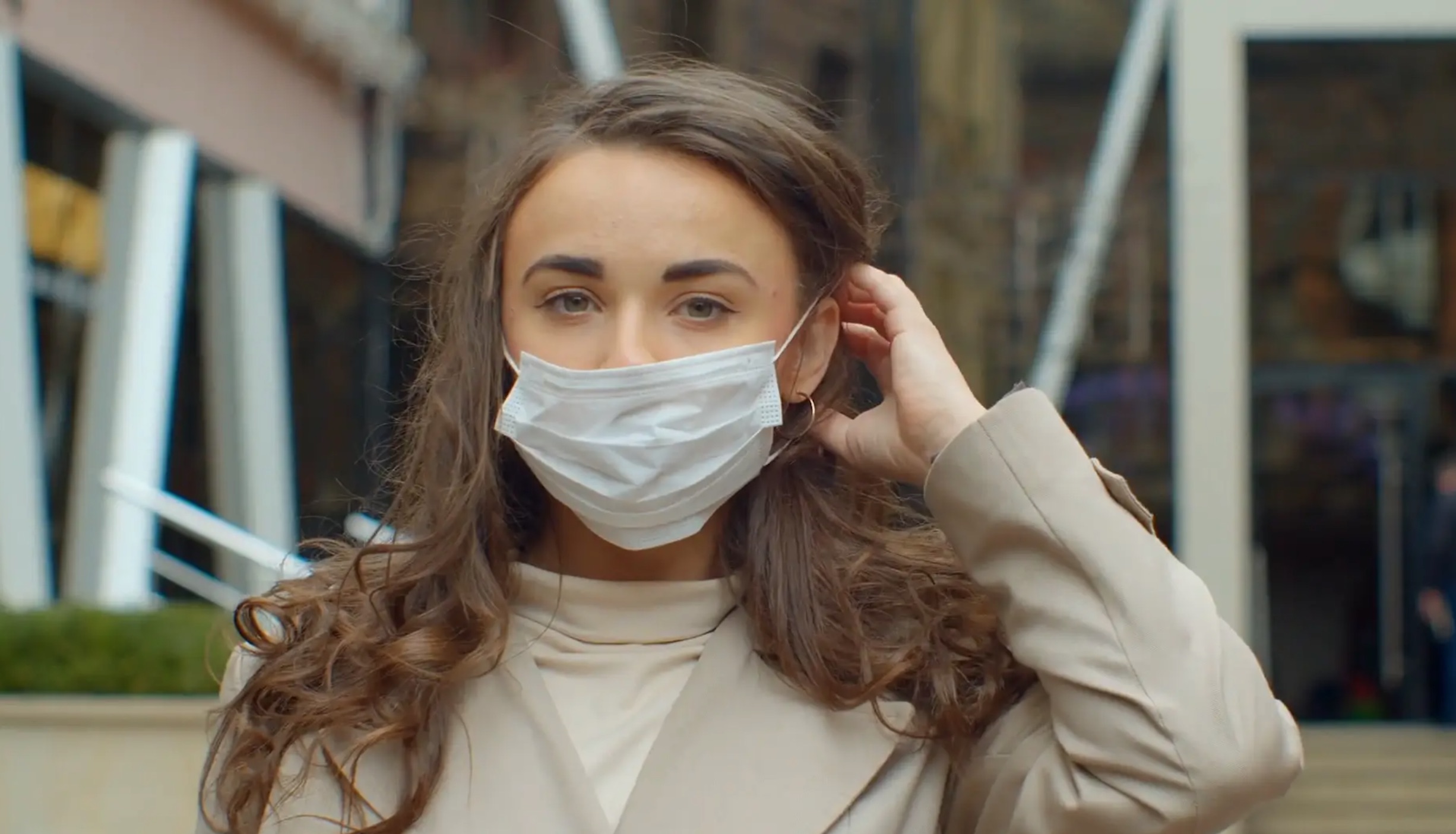Probably the #1 question I get from non-doctor friends is “So what is this ‘CORONAVIRUS THING,’ really?”
It’s a great question, and you’d think it would be easy to find answers since the entire internet is flooded with information about it. Unfortunately, an information deluge is often not helpful—when it is made up of countless untrusted, nonspecific, or conflicting entries from literally all over the world.
I was curious just how overloaded the internet might be with the “CORONAVIRUS THING,” so I used Google’s dashboard to do a quick trend search.
I started with what I figured people would be talking about and searching for most in early 2020, so I started with TRUMP, TESLA, and CATS (hey—I’m a doctor, not a pop culture anthropologist, OK?) in BLUE, RED, and YELLOW respectively:[/vc_column_text]

It is noteworthy that the main two Trump spikes correspond to him announcing and later formally addressing the US response to Coronavirus. Even still, when I added “CORONAVIRUS” onto the search, in GREEN, this what it did to relative hits:

Coronavirus basically squashed Trump, Tesla, and cats COMBINED into barely detectable blips.
So what did I learn? This “CORONAVIRUS THING” is well into information-deluge territory; people don’t care nearly as much about electric car companies with unprecedented stock growth as I do, and watching every episode of America’s Funniest Home Videos in the 90s led me to the apparently mistaken belief that cat videos are the most widely coveted video clips. Thanks for nothing, Bob Saget.
I want to help give you an umbrella in the middle of this deluge. Let’s try to unravel the basic and most common terms presiding over “this coronavirus thing.”
Coronavirus vs. SARS-CoV-2 vs. COVID-19:
Coronavirus isn’t a thing—it’s a group or a family of things. The fancy biological term for the family of all coronaviruses is Coronaviridae (kuh-ROAN-uh-VEER-uh-dee). There are over 30 different coronavirus species, but less than 10 of them can infect human beings. SARS-CoV-2 is one species of this virus family and the newest evolved member of the group.
Do you have a good analogy?
Why, yes I do!
Think of canines. The fancy biological term for this family is Canidae (KANE-uh-dee). Similarly, there are about 30 species of wolves, dogs (all of which are only one species—fun fact!), foxes, and jackals. We only have different spoken names for canine subfamilies because we can see them. For hundreds of thousands of years we have seen them living alongside us, and names like “fox” and “wolf” have crept universally into languages across the globe. Coronaviruses have only been observed very recently (tens of years) and only with highly specialized lab techniques by very few people. This is why species names of coronaviruses take more confusing forms like “SARS-CoV-2, a species of the betacoronavirus subfamily,” versus “Tibetan sand fox, a species of the fox subfamily,” which seems much more intuitive.
Soooo, Coronavirus is like saying “all those cute furry four-legged things with tails and long snouts and sharp teeth” and “SARS-CoV-2” is like saying ‘red fox’?
Exactly. Though I agree with one qualification:
The difference here is that SARS-CoV-2 is a completely novel species that just evolved this year. Following our analogy, let’s imagine that you go to the park tomorrow. Let’s say you’re being a good citizen, getting fresh air, and staying 6 feet away from others, not touching any man-made structures like benches or fountains. Then, all of the sudden, a four-legged beast lumbers out from the tree line. It looks kind of like a wolf, but stands 5 feet at the shoulder, has red lidless eyes, and serrated horns adorning its brow and running the length of its spine. You escape, but by dinner there are now four of them in the park, and by tomorrow night there will be hundreds roaming the streets of your town. That’s SARS-CoV-2.
Yikes. So, wait… what is COVID-19 then?
Great question.
COVID-19 is the name of the disease experienced by humans infected with the SARS-CoV-2 virus. The spectrum of the disease COVID-19 spans from asymptomatic, to mild respiratory infection, to a Serious Acute Respiratory Syndrome (this is where the name SARS comes from). SARS can require hospitalization and lead to death, even in relatively healthy, young patients. Most of the other species in the Coronavirus family that affect humans only cause mild respiratory symptoms (experienced as a common cold). There are two notable exceptions, including the SARS-CoV species which caused the “SARS epidemic” in the early 2000s, if you remember that.
Huh, neat. So, what does COVID-19 look like?
Well, since I am a radiologist, I can show you exactly what it looks like from cases I’ve read! Here are three pathologies in similar locations (left lower lung), and a normal for comparison, in four different 50-something year old males:
What does COVID-19 look like?

B. Moderate COVID-19
C. Lung Cancer
D. Pneumonia
Conclusion
There you have it. The next time you encounter an awkward quarantine pause, share some of these fun facts, and throw a line to someone else drowning in the information deluge. Keep coming back to Doctorpedia for more straight-up medical information designed for the public. And, as always, stay safe and stay healthy!
 Back to Blog Homepage
Back to Blog Homepage